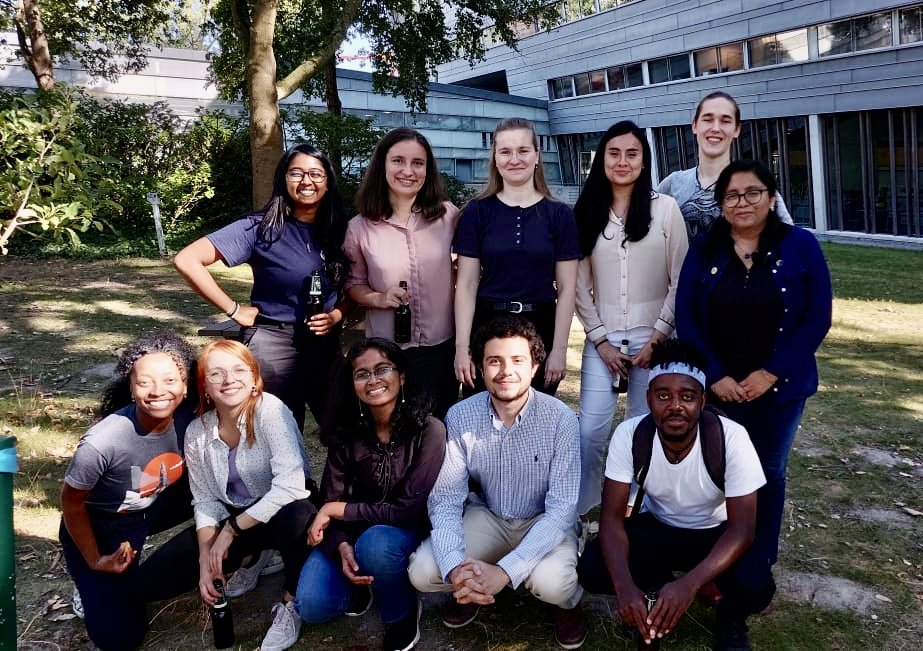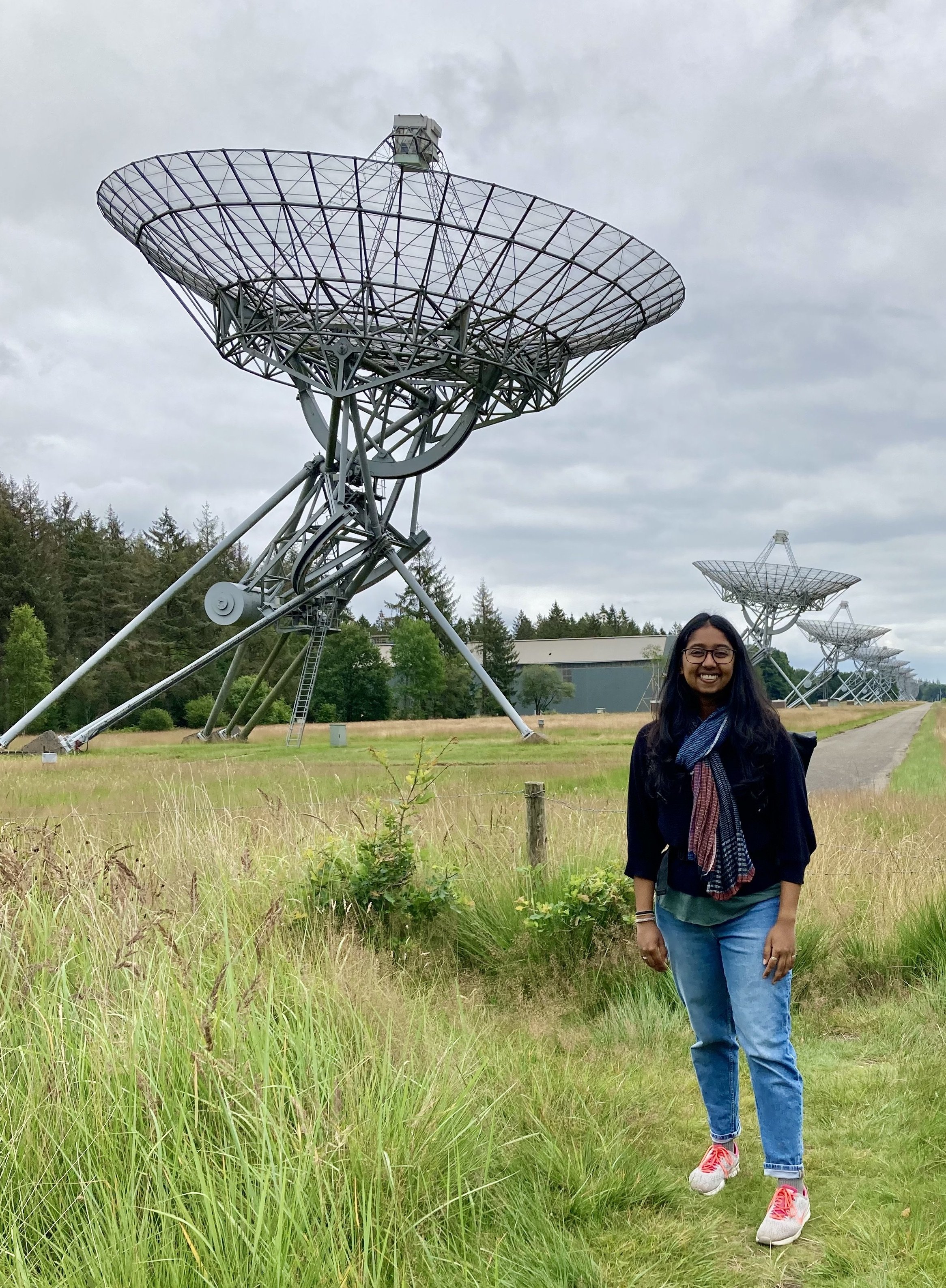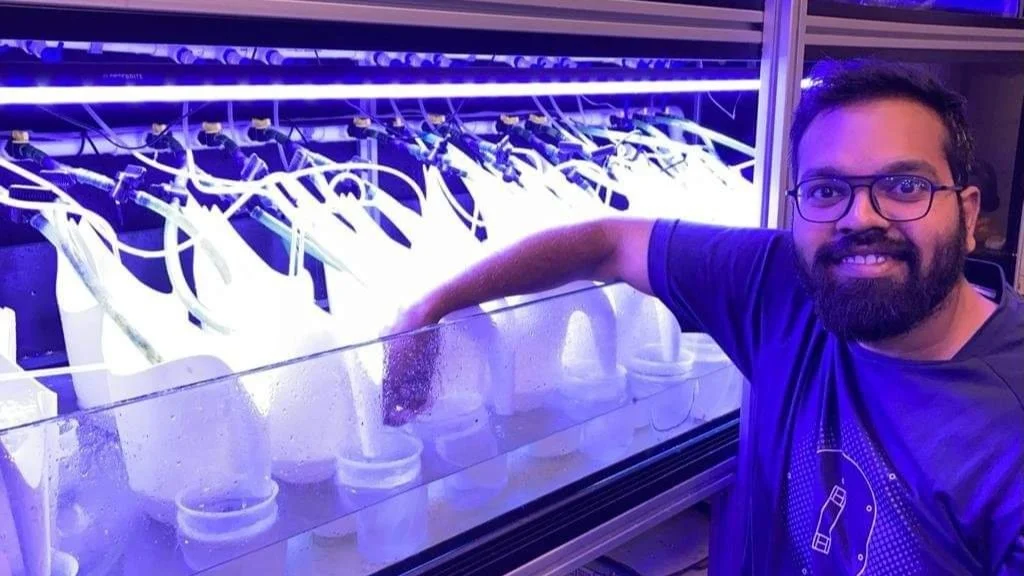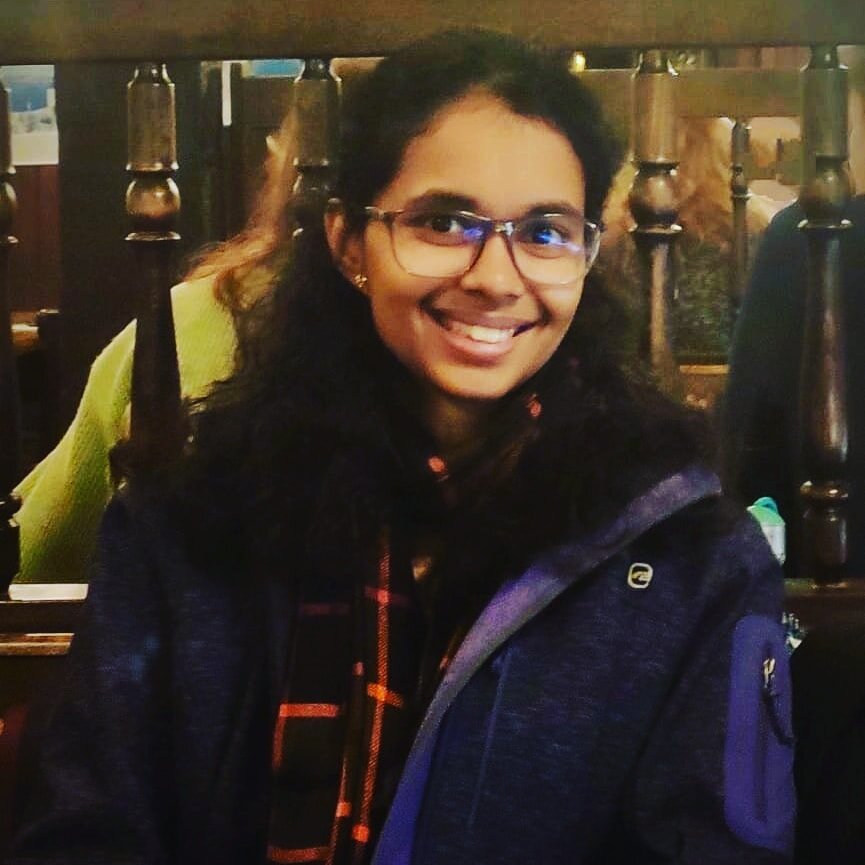Scholar Update: Rashmi Gottumukkala
Rashmi Gottumukkala is a 2021 scholar. She is pursuing a Master’s in Astrophysics at the Geneva Observatory, University of Geneva. From June to August of this year Rashmi attended a 10-week summer research program, The Leiden/ESA Astrophysics Program for Summer Students (LEAPS), at the Leiden Observatory, The Netherlands.
In this week’s post Rashmi tells us how she hopes to go beyond the boundaries of our limitless universe.
In the questions it asks and the boundaries it pushes, astronomy is an ambitious subject. How far back in time can we see? How has the universe evolved on cosmic timescales? Is there life on other planets? These are daring questions, and in pursuing them, astronomers inch towards a complete understanding of the history of the cosmos.
I am currently doing my Master’s in Astrophysics at the Geneva Observatory, funded by the Inlaks Scholarship, and am working on early-universe observational astronomy. In this field, astronomers find ways to push the most powerful telescopes to their limits; they are looking for the faintest blobs of light, the first galaxies. Understanding the nature of such galaxies will allow us to better understand the evolution of the universe over billions of years.
My master’s thesis in the ‘Galaxy Build-up at Cosmic Dawn’ involves hunting for distant massive galaxies in the first two billion years of the universe, in order to obtain a census of the galaxy population in this early epoch. Working with Dr. Laia Barrufet and Prof. Pascal Oesch, we aim to determine physical quantities such as the masses and star formation rates of these early galaxies close to the dawn of the universe. Using data from the incredible ‘James Webb Space Telescope’ (JWST) that was launched late last year, we hope to find these elusive galaxies and do exciting science with them!
Rashmi with her fellow classmates at LEAPS
This summer, I was selected to participate in the ‘Leiden/ESA Astrophysics Program for Summer Students’ (LEAPS), a 10-week research program at the Leiden Observatory in the Netherlands, where I worked with Dr. Sarah Leslie, Dr. Ian Roberts, and Dr. Ashley Bemis. Galaxies usually emit light in all regions of the electromagnetic spectrum, and various physical processes give rise to emission in different electromagnetic regimes. It so happens that emission in the infrared and radio regimes can both be linked back to star formation, even though the exact emission processes themselves are very different in both cases. Our project involved the study of this link, called the infrared-radio correlation or the IRRC, with a focus on galaxies in the distant universe.
Rashmi in Amsterdam
We used some of the deepest radio data from the ‘Very Large Array’ (VLA) telescope in New Mexico to investigate whether the IRRC evolved over cosmic time, and to determine whether either physical processes or observational biases might explain this evolution. While we did find a significant evolution of the IRRC as previous studies had found as well, we also noted that as we looked farther away we were actually only looking at the brightest galaxies in the radio regime, and the IRRC seemed to be significantly correlated with the brightness of these galaxies in this regime. Our study determined that using the deepest available radio data, the observed evolution of the IRRC is a result of the biased sample of galaxies we find when we look farther away. This suggests that the ratio of the infrared to radio emission of galaxies remains constant through cosmic time, at least up till where we can currently probe.
I had a wonderful summer in Leiden, both in terms of research and beyond. Leiden is a lovely town, with pretty little canals and bridges, flowers lining the sidewalks, cobblestoned streets, and cute little cafés. I used my weekends to travel to some beautiful Dutch towns – Delft, Utrecht, The Hague, Gouda (where the cheese comes from!). The Netherlands also has fantastic art museums, the most famous of which are in Amsterdam. I got to see Van Gogh’s incredible ‘Potato Eaters’ and ‘Bedroom in Arles’, Rembrandt’s ‘Night Watch’, Vermeer’s ‘Milkmaid’, and much more.
Rashmi with the Westerbork Synthesis Radio Telescope
The LEAPS programme also organised some fun day-trips to other institutes in the Netherlands – the ‘European Space Agency’ (ESA), the space institutes ASTRON and SRON, the ‘Westerbork Synthesis Radio Telescope’ (WSRT) and the ‘Low-Frequency Array’ (LOFAR). It was quite cool to see the state-of-the-art facilities where telescopes are built and instruments are tested, and meet with the scientists working there.
This past year has been full of new experiences and opportunities. I feel very lucky to have had such a rich experience in Europe, in terms of study, research, and life here. I am especially grateful to the Inlaks Foundation, without whose support and encouragement none of this would have been possible. As I continue my search for galaxies in the cosmic past, I am very excited and hopeful for what the future has in store!
Top Image: Rashmi with a model of the ‘James Webb Space Telescope’ (JWST)









